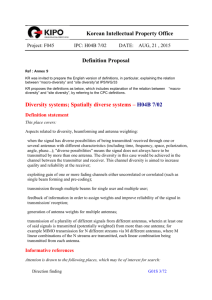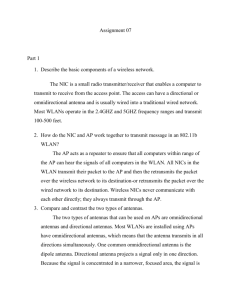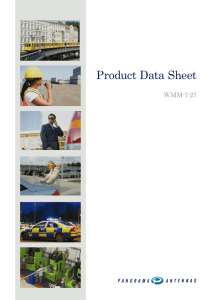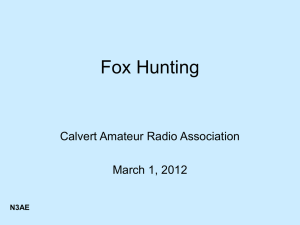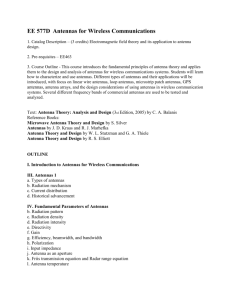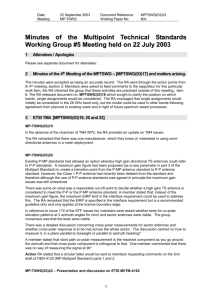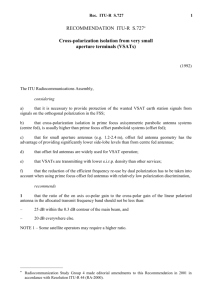Transmit Antenna Selection in Ad Hoc Networks: Best Paper Nomination
advertisement
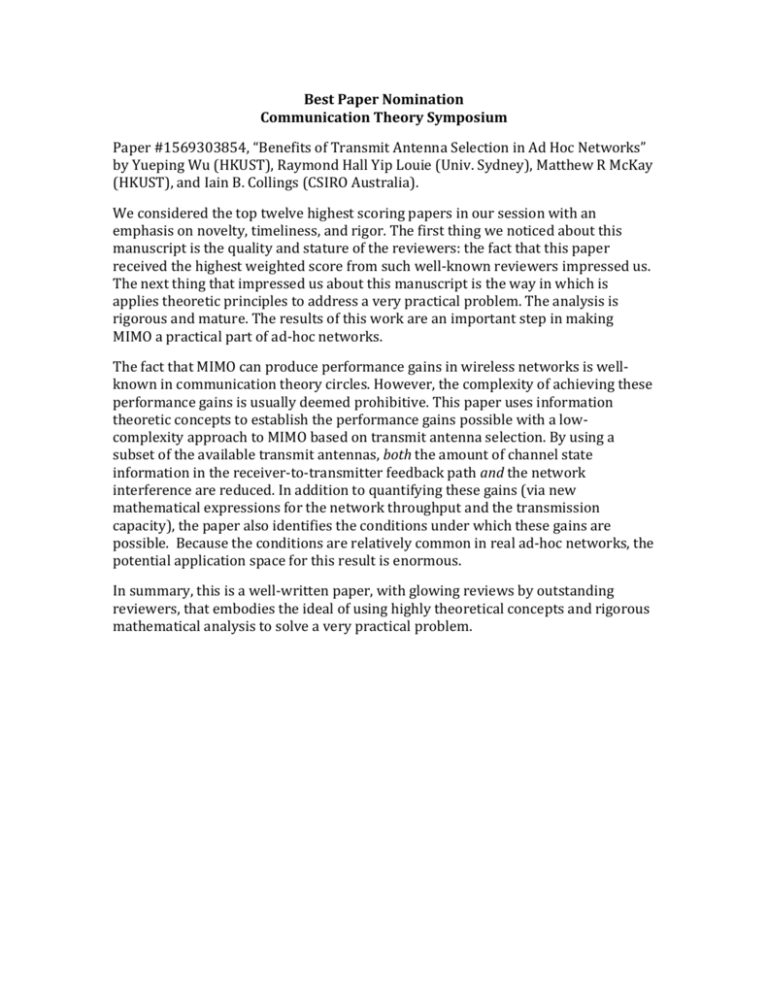
Best Paper Nomination Communication Theory Symposium Paper #1569303854, “Benefits of Transmit Antenna Selection in Ad Hoc Networks” by Yueping Wu (HKUST), Raymond Hall Yip Louie (Univ. Sydney), Matthew R McKay (HKUST), and Iain B. Collings (CSIRO Australia). We considered the top twelve highest scoring papers in our session with an emphasis on novelty, timeliness, and rigor. The first thing we noticed about this manuscript is the quality and stature of the reviewers: the fact that this paper received the highest weighted score from such well-known reviewers impressed us. The next thing that impressed us about this manuscript is the way in which is applies theoretic principles to address a very practical problem. The analysis is rigorous and mature. The results of this work are an important step in making MIMO a practical part of ad-hoc networks. The fact that MIMO can produce performance gains in wireless networks is wellknown in communication theory circles. However, the complexity of achieving these performance gains is usually deemed prohibitive. This paper uses information theoretic concepts to establish the performance gains possible with a lowcomplexity approach to MIMO based on transmit antenna selection. By using a subset of the available transmit antennas, both the amount of channel state information in the receiver-to-transmitter feedback path and the network interference are reduced. In addition to quantifying these gains (via new mathematical expressions for the network throughput and the transmission capacity), the paper also identifies the conditions under which these gains are possible. Because the conditions are relatively common in real ad-hoc networks, the potential application space for this result is enormous. In summary, this is a well-written paper, with glowing reviews by outstanding reviewers, that embodies the ideal of using highly theoretical concepts and rigorous mathematical analysis to solve a very practical problem. Relevance and timeliness Excellent (5) Technical content and scientific rigor Solid work of notable importance. (4) Novelty and originality Quality of presentation Significant original work and novel results. (4) Excellent. (5) Strong aspects (Comments to the author: what are the strong aspects of the paper) This paper studies transmit antenna selection in an adhoc wireless network that contains an arbitrary number of multi-antenna transmitter receiver pairs. Each transmitter wants to transmit possibly multiple streams to a single receiver. The independent streams are transmitted accross a subset of the available N transmit antennas, that is where the antenna selection becomes relevant. The receiver uses zero forcing to decode the symbols. One of the strengths of the paper is that the authors employ quite a practical antenna selection scheme; the antennas are selected based on the transmitter-receiver channel state, no information regarding the interferers is required. Even in such a partially noncoherent selection scenario, their scheme is shown to outperform a scheme where the antennas are selected randomly. They also provide an approximate analysis of their scheme which performs reasonably close to the actual performance. The approximations are well justified and reasonable as far as the scale of the network and the generality of the model is considered. Finally, they obtain a criterion that shows how many of the transmitter antennas should be selected to achieve an increasing transmission capacity. This criterion depends on the number of transmitter antennas and the path loss exponent. To summarize, their scheme is simple, elegant, and they demonstrate that it works by (almost) careful analysis. I suggest acceptance. Weak aspects (Comments to the author: what are the weak aspects of the paper?) No weak aspects. Recommended changes (Recommended changes. Please indicate any changes that should be made to the paper if accepted.) No changes recommended. Relevance and timeliness Excellent (5) Technical content and scientific rigor Solid work of notable importance. (4) Novelty and originality Quality of presentation Significant original work and novel results. (4) Excellent. (5) Strong aspects (Comments to the author: what are the strong aspects of the paper) This paper is a nontrivial extension of the transmit antenna selection briefly considered in [2] to the case where there are N receive antennas. Also, a new and more accurate and complete method for computing outage probability is given, which is somewhat cumbersome but nevertheless accurate. It also permits transmission capacity to be computed and scaling to be observed, which allows some intuitive lessons to be drawn. The paper is well written and results are pretty clear considering their complexity. Weak aspects (Comments to the author: what are the weak aspects of the paper?) The paper suffers from length restrictions, since some key proofs and expressions are omitted, but this is not the fault of the authors. The abstract was initially confusing where they refer to "single antenna transmission" after just referring to multiple antenna transmitters. It took me a minute to realize they mean the case where just one of the N antennas is used. Recommended changes (Recommended changes. Please indicate any changes that should be made to the paper if accepted.) Above comment on abstract. Plus it would be nice if arxiv version with full results was made available with link. Relevance and timeliness Excellent (5) Technical content and scientific rigour Excellent work and outstanding technical content. (5) Novelty and originality Quality of presentation Significant original work and novel results. (4) Excellent. (5) Strong aspects (Comments to the author: what are the strong aspects of the paper) The papers present a pragmatic approach to MIMO transmission in wireless ad hoc networks. This approach operates under the assumption that only knowledge of the Tx-> Rx channel is available (and not the information about any interferers), which is the most practical case. The results are interesting and show that single-antenna selection offers the best performance in many cases. Weak aspects (Comments to the author: what are the weak aspects of the paper?) None identified (other than I could not check one of the main results because the proof had to be omitted because of space limitations. Recommended changes (Recommended changes. Please indicate any changes that should be made to the paper if accepted.) No necessary changes were identified.
![EEE 443 Antennas for Wireless Communications (3) [S]](http://s3.studylib.net/store/data/008888255_1-6e942a081653d05c33fa53deefb4441a-300x300.png)
